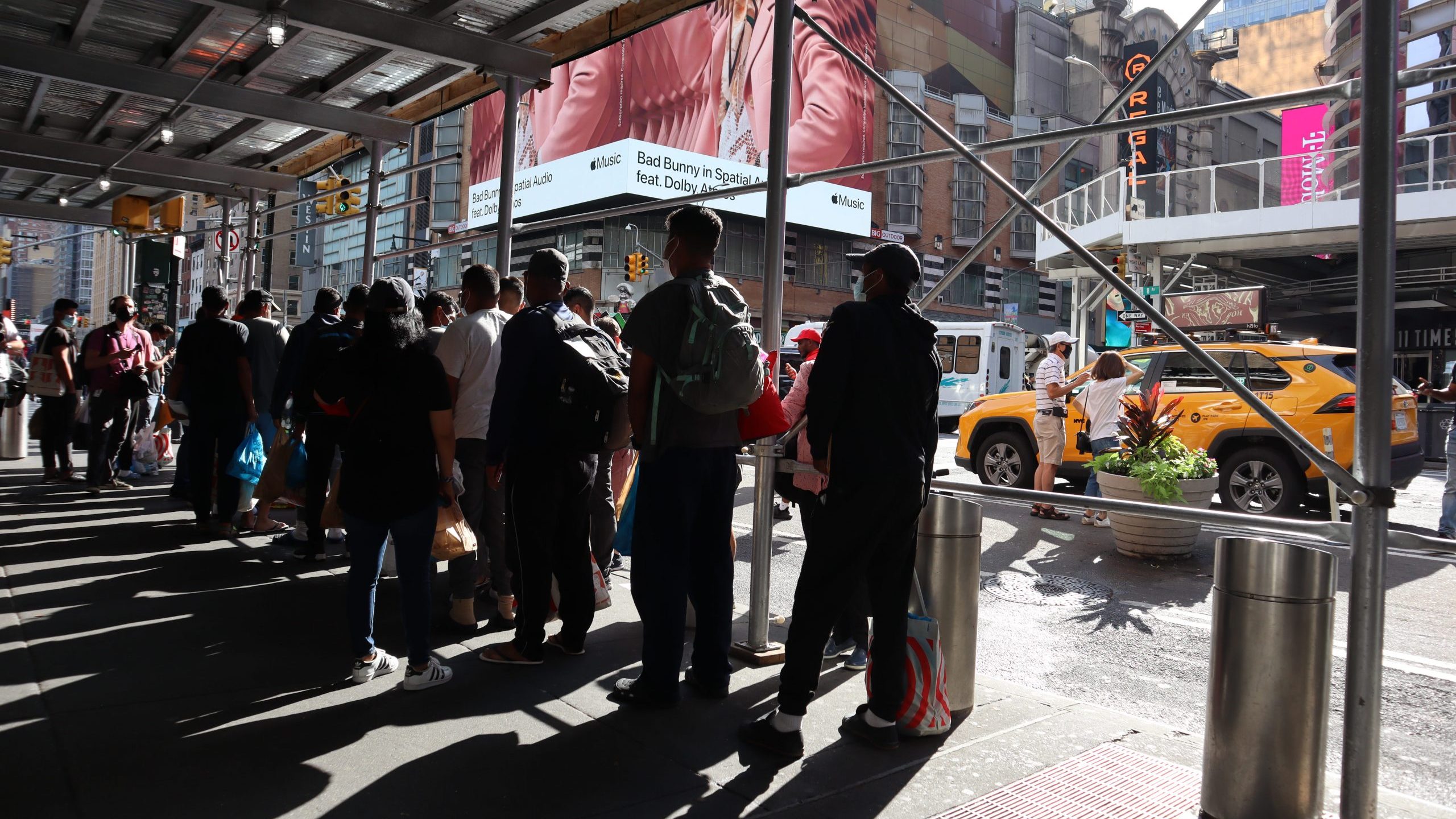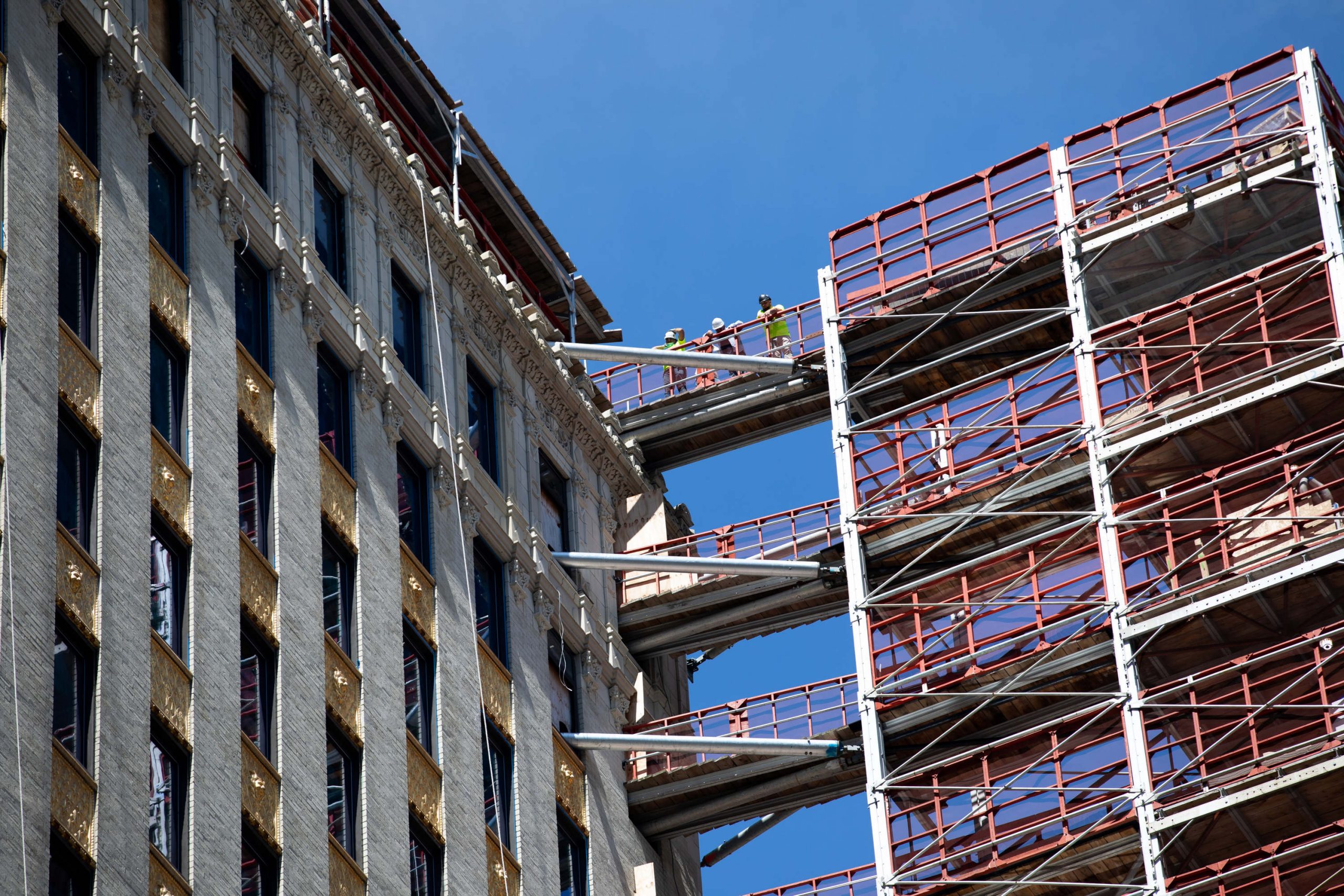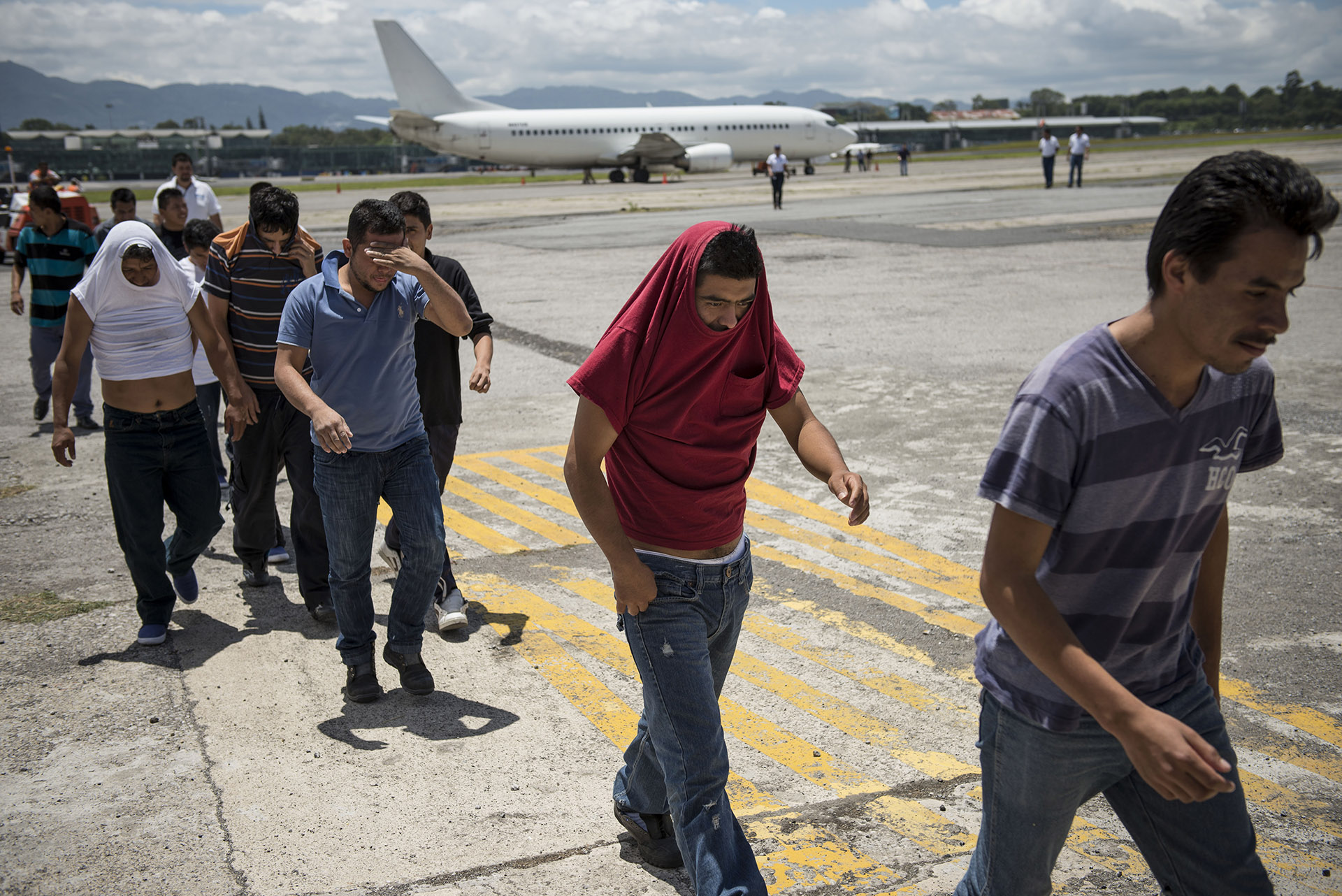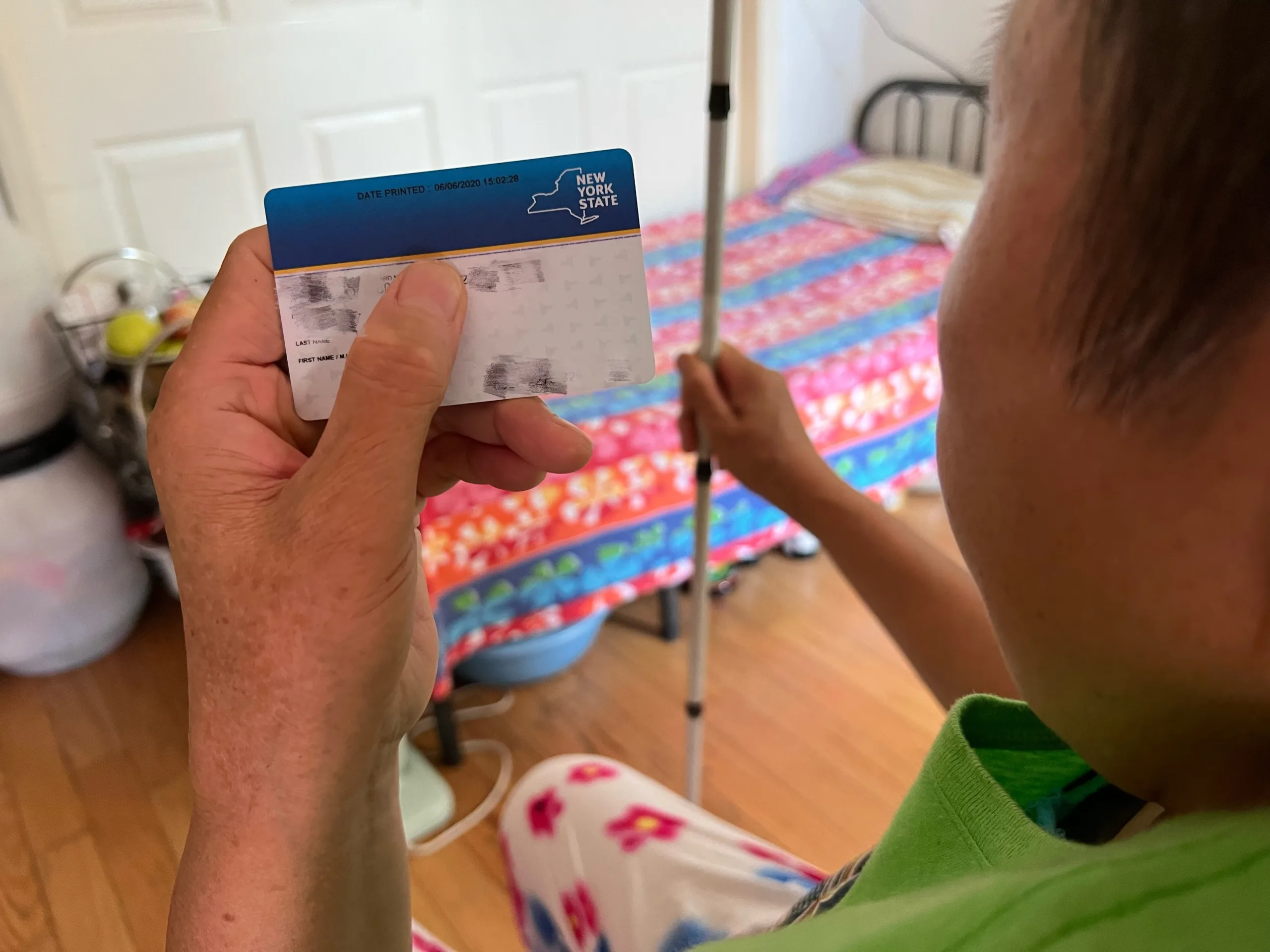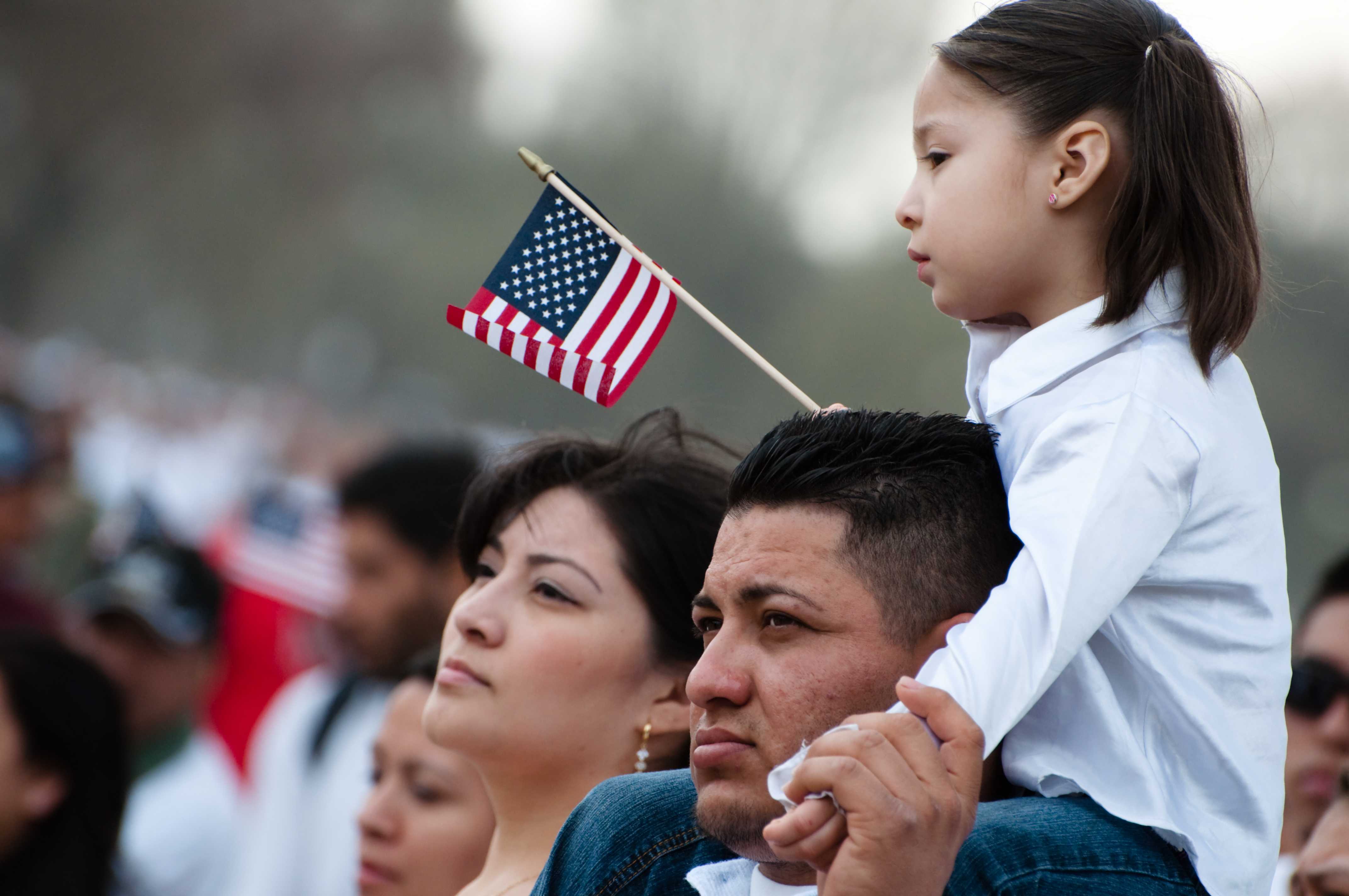On Wednesday morning, three busloads of immigrants pulled into one of the dingy corners of the NYC Port Authority bus terminal. The migrants waved from inside of the dark tinted bus windows while a crowd of reporters, volunteers, and city staff waited to greet them. Many of the migrants were primarily single Venezuelan men, but among them were also some families.
They held only one or two grocery bags of belongings as they disembarked and entered the makeshift intake area inside the terminal where they were given food, clothes, toiletries, and medical care. They were happy to know that their arduous journey had ended, some said in interviews — at least momentarily.
“I never imagined that I would be welcomed in this way,” said 40-year-old Gustavo Mendez, with a smile.
Mendez, who traveled from Del Rio, Texas, to New York by bus, was delighted to see such a lively reception at Port Authority after a journey from his home in Venezuela, to Colombia, across the Darien Gap, and through Central America and Mexico all on his own. Although he has no friends or relatives in New York, he hopes to enter the shelter system and eventually look for work so he can send home money to his mother and his two sons, ages 11 and 15, who remain at home in Venezuela. “They’re sad because their dad has left,” Mendez said.
Also Read: Court Cases in New York Are Scheduled Out to 2023, Leaving Asylum Seekers Hopeless
Outside of the bus station, over a dozen volunteers with South Bronx Mutual Aid (SBMA) had set up foldable tables with their own makeshift intake center. The volunteers, who said they were barred from setting up inside the bus terminal, ordered cars for migrants to take them to shelters and intake centers across the City. Once the migrants stepped outside the station, holding manila envelopes with information for the next steps, some took out their phones to pose for selfies and document their surroundings.
Across the street from Port Authority, 33-year-old Carlos Fernandez from Venezuela, was waiting for transport to a shelter intake center.
“We are finally free,” Fernandez said. “We were coming in a bus that was like a prison.”
But the immigrants arriving on buses from Texas, joyous at the welcome they had received in NYC, are likely to face ample challenges in the weeks ahead. For some who had arrived days and weeks prior, slivers of optimism began to fade as days passed by. Some were still staying at shelters, they said, with no timeline for when they would be able to access more permanent housing.
In some cases, immigrants were out every day searching for jobs across NYC, only to be denied employment and return to their temporary cot.
Also Read: New York’s Dire Need for Indigenous Interpreters
Since Texas Gov. Greg Abbott began sending migrants first to D.C. in April, and more recently New York, as part of his controversial Operation Lone Star, city and nonprofit agencies have been overwhelmed with more than 4,000 asylum seekers.
Ariadna Phillips, an organizer with SBMA, was highly critical of the City’s slow response to the crisis. Since more immigrants began to arrive in the NYC, SBMA has been working to secure housing for them. Phillips even opened up her home to several families, she said. Although Phillips acknowledged that the City has finally begun addressing the situation, she argues that they are still not doing enough.
“As you can see there is no transport arranged other than us,” she said. “They are not escorting them and making sure they are safe to enter shelters…People are being potentially released into a city where they have no money and no ways to reach people.”
But the City said it has also been helping provide transportation from Port Authority to the shelter systems via the New York Taxi Workers Alliance over the weekend, and a partnership with Uber, according to Shaina Coronel, a spokesperson for the Mayor’s Office of Immigrant Affairs.
City officials, including Mayor Eric Adams, have said in recent weeks that they have been providing as much support as possible to the migrants.
“We’re not going to leave anything on the table when it comes to housing of those who are in this city, and those who are coming to our city and seeking some form of housing,” Mayor Adams said at a press conference this week. “So we’re open to good ideas and we’re not leaving anything off the table in doing so.”
Inside the Port Authority on Wednesday, Manuel Castro, the Commissioner of the NYC Mayor’s Office of Immigrant Affairs, supervised the city’s efforts. As each bus load of migrants entered the terminal, Castro greeted them with an enthusiastic “Bienvenidos.” In total, 92 immigrants were dropped off at the station according to the NYC Mayor’s Office of Immigrant Affairs.
“As you can see, people are very hungry, very thirsty. They don’t have enough food and water for the journey. That’s our priority, we want to make sure people are well,” Castro told Documented on Wednesday. “We have to figure out how to shelter people.”
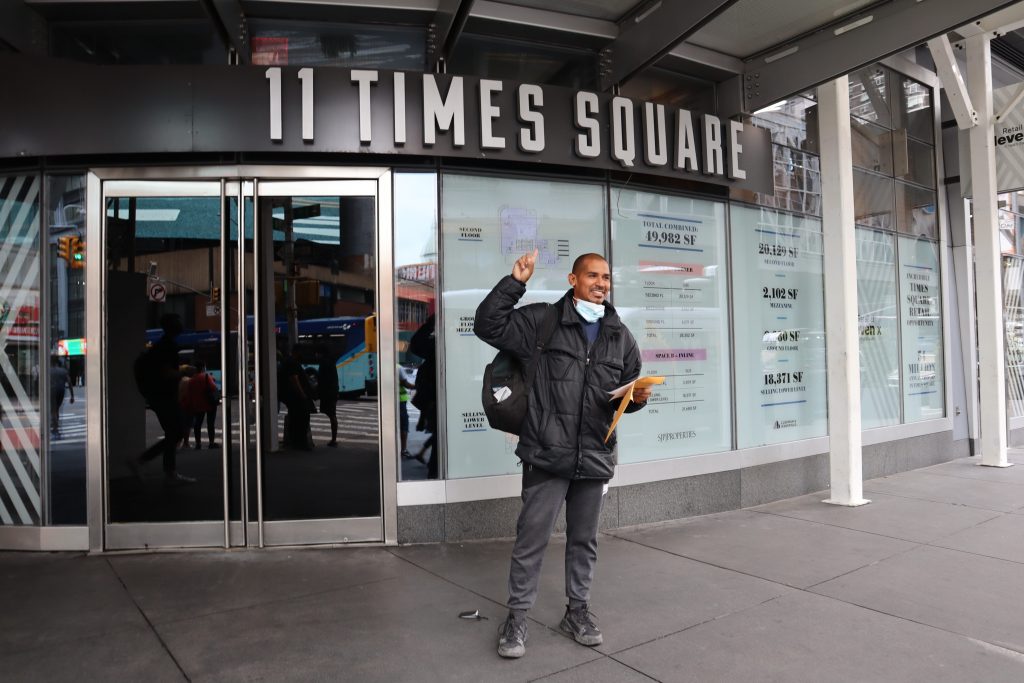
After migrants left Port Authority, many headed to intake centers and shelters. Catholic Charities of the Archdiocese of New York has helped over 1,200 of the estimated group of 4,000 or more recently arrived migrants, said Monsignor Kevin Sullivan, the Executive Director. Migrants have arrived at Catholic Charities looking for aid, and the group has helped direct people to shelters, assisted with food, clothes, legal assistance, and other services. Sullivan said that the increase in the number of migrants coming to New York has been difficult for his organization.
Also Read: ICE is Leaving Asylum Seekers at a Remote Bus Station in New York
“Yes, we are strained,” he said. “I do think there is certainly a need for resources – for federal resources. From our perspective, we think this is a national crisis.”
At a Catholic Charities Office in Midtown East, Fernando, who arrived in New York City about three weeks ago after entering Texas through the Mexican City of Piedras Negras following his trek from Venezuela, was at the office for an appointment to go over his documents. In Venezuela, Fernando — who preferred to just use his first name due to privacy reasons — was a professor, and now he’s searching for work.
Fernando has four children that are still in Venezuela, ages 12 through 23. “It’s something I’m doing for them, I’m trying to give them the best life possible,” he said. “My dream is to establish myself here.” He currently is staying at the Bedford-Atlantic Armory shelter in Crown Heights, where he shares a space with about 15 people, he said. But like so many others, he has no timeline for when he’ll be able to move to more permanent housing.
Like Fernando, the first stop for many of the immigrants is one of the overcrowded NYC shelters. Some have ended up at Manhattan’s notorious 30th Street Men’s Shelter, which has been rife with drugs, theft, and violence over the years.
Also Read: Refugees, Asylum Seekers Can Work Legally in the U.S. For Longer Due to New USCIS Rule
Under the scaffolding outside of the 30th Street Men’s Shelter, 24-year-old Neudys and his friend, 19-year-old Alfredo, hung out watching videos on their phones. Neudys, from Venezuela, first arrived in New York about two weeks ago and had been working in Colombia for many years. The past few weeks at the shelter have been challenging, especially without connections to New Yorkers, they said, giving only their first names for privacy reasons.
The pair expected their arrival to be difficult, they said, but still, the transition is frustrating. As they fought to find work and permanent housing, these challenges dimmed the enthusiasm they had once felt when they first arrived in their new City some weeks ago. Alfredo had already been at the shelter for almost a month, he said.
Neudys would like to make his own salary to find more private and secure housing, but he hasn’t been able to find work without the right documents, or without being able to speak English. “I’d like to pay for a dignified room where I could sleep,” he said.
Every day, he goes out to different stores across all five boroughs — mechanical shops, restaurants, construction sites — to ask for work. And every day, he is rejected. “It’s hard, but what are you going to do? That’s how it is,” he said.
This story was updated to include a response from the Mayor’s Office of Immigrant Affairs about transportation to the shelter systems.
